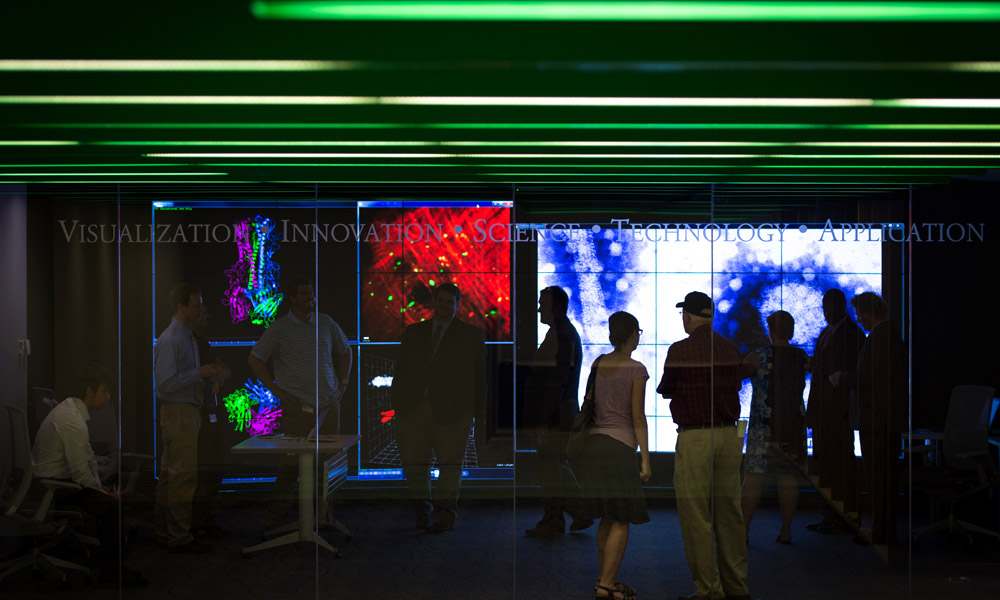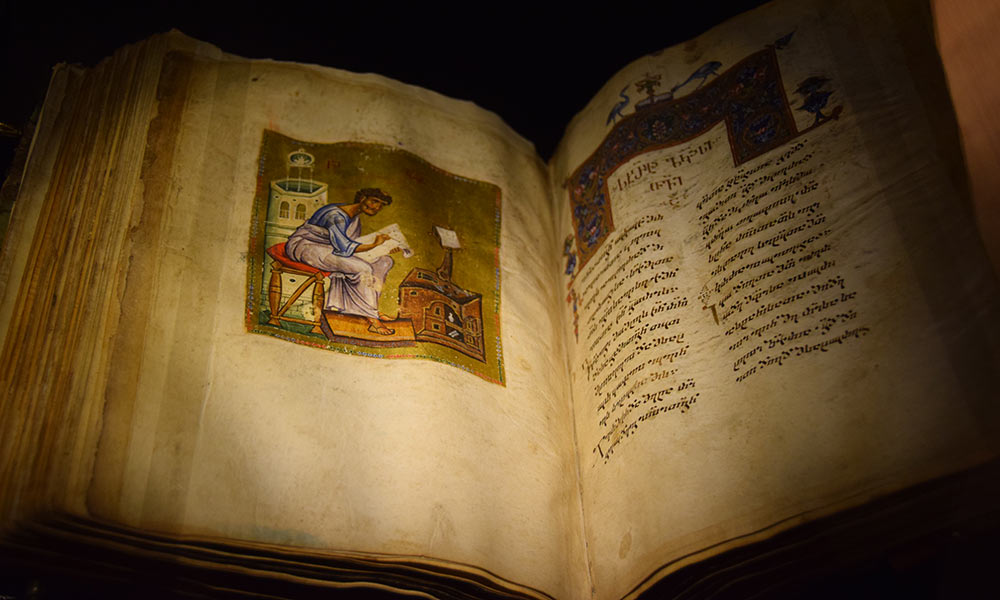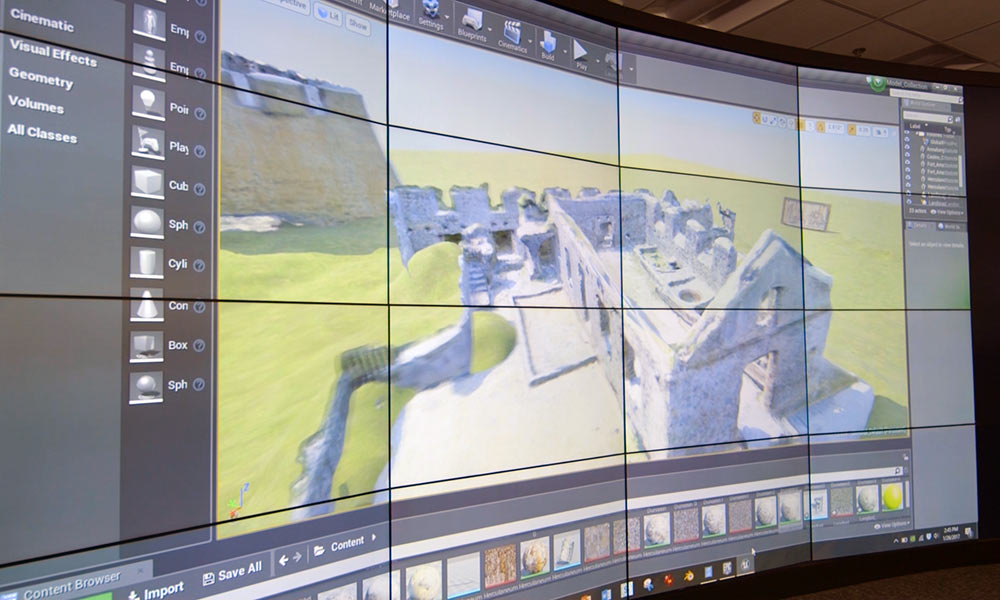
Light and Sound Interactive: September 12–14, 2017
The first-ever Light and Sound Interactive (LSI) is the only conference of its kind in the world: part interactive conference on emerging light- and sound-based technologies, part arts festival, part industry expo. Rochester is at the center of a burgeoning scene in optics, music, audio technologies, imaging, and photonics. The University of Rochester and Rochester Institute of Technology are hosting LSI as a way to showcase the greater Rochester region as a world-class leader in these interdisciplinary fields.
Keynote speakers
- David Munson, president of the Rochester Institute of Technology
- Jeff Lieberman, MIT scientist, photographer, musician, roboticist, and sculptor, Host of the Discovery Channel’s Time Warp.
- Ainissa Ramirez, science evangelist and author
- Steve Sasson, inventor of the digital camera
- Rob Legato, Academy Award-winning filmographer
University of Rochester speakers
- Joel Seligman, president and CEO of the University of Rochester
- Danny Wegman, company chairman of Wegmans Food Markets and chair of the board of trustees of the University of Rochester
- Jannick Rolland, professor of optics and biomedical engineering, on novel VR/AR technologies and freeform optics applications
- Kristana Textor, Warner School of Education; and Michael Jarvis, director of digital media studies, on teaching and learning with sound and light
- Gregory DeAngelis, Dave Mitten, Charles Duffy, and Benjamin Crane from the University of Rochester Medical Center on medical applications of virtual reality
- Mark Bocko, director of the Center for Emerging and Innovative Sciences, on innovations in light and sound in Rochester
- Mark Watters, director of the Beal Institute for Film Music and Contemporary Media at the University of Rochester’s Eastman School of Music, on storytelling with music
- Darren Mueller, assistant professor of musicology at the Eastman School of Music, on vinyl records as new media
- John Covach, director of the Institute for Polular Music, on music in media
- Gregory Heyworth, associate professor of English and textual science, on imaging and cultural heritage
- Diane Dalecki, professor of biomedical engineering and electrical and computer engineering; and Kevin Parker, professor of electircal and computer engineering, on ultrasound technologies
- Krystel Huxlin and Ajay Kuriyan from the Flaum Eye Institute, and David Williams from the Center for Visual Science and the Institute of Optics, on emerging technologies for visual impairment, correction, restoration, rehabilitation, and assistance
- Robert Pollard and Ian DeAndrea-Lazarus from the University of Rochester Medical Center on access and corrective technologies for the deaf and hard of hearing
- John Foxe and Sophie Molholm from the University of Rochester Medical Center on audiovisual processing in neurodevelopmental disorders
- Thomas Foster from the University of Rochester Medical Center on biophotonics and optical technologies
- Jiebo Luo, professor of computer science, on harvesting the healing power of articifial intelligence and big data
- Scott Carney, director of the Institute of Optics, on fighting cancer with video games and lasers
- Wayne Knox, professor of optics, on the future of vision correction
Spotlight on Light and Sound Interactive

Ang Lee to keynote Light and Sound Interactive
Ang Lee, the two-time Oscar Award-winning director of Life of Pi and Brokeback Mountain, will be a major keynote presenter for the upcoming, first-ever Light and Sound Interactive (LSI). Lee will be joined by Oscar-nominated film editor Tim Squyres and technical supervisor Ben Gervais. Together, they will present scenes from Lee’s groundbreaking 3D, 120 frame-per-second (fps) feature film, Billy Lynn’s Long Halftime Walk.
In addition to Lee, Oscar Award-winning visual effects supervisor Rob Legato, who won Oscars for Titanic, Hugo, and The Jungle Book, will be presenting another major keynote on Thursday morning, Sept. 14 at the convention center.
University of Rochester speakers will be sharing their latest work in fields like virtual and augmented reality, medical imaging, music and audio, displays and imaging, and optics and photonics.
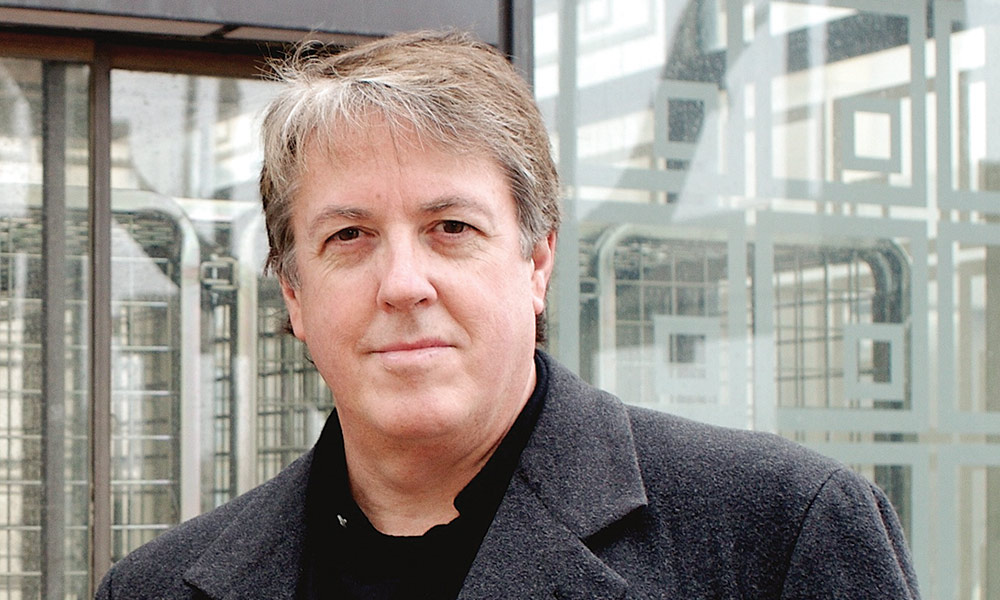
Composer Mark Watters says new media is changing the score
Emmy Award-winning composer and conductor Mark Watters has composed musical scores for motion pictures, television, DVD, video games, even the Olympics. In April, he was named the inaugural director of the Eastman School of Music’s Beal Institute for Film Music and Contemporary Media, and he’s setting his sights on preparing students for new opportunities in a rapidly changing field.
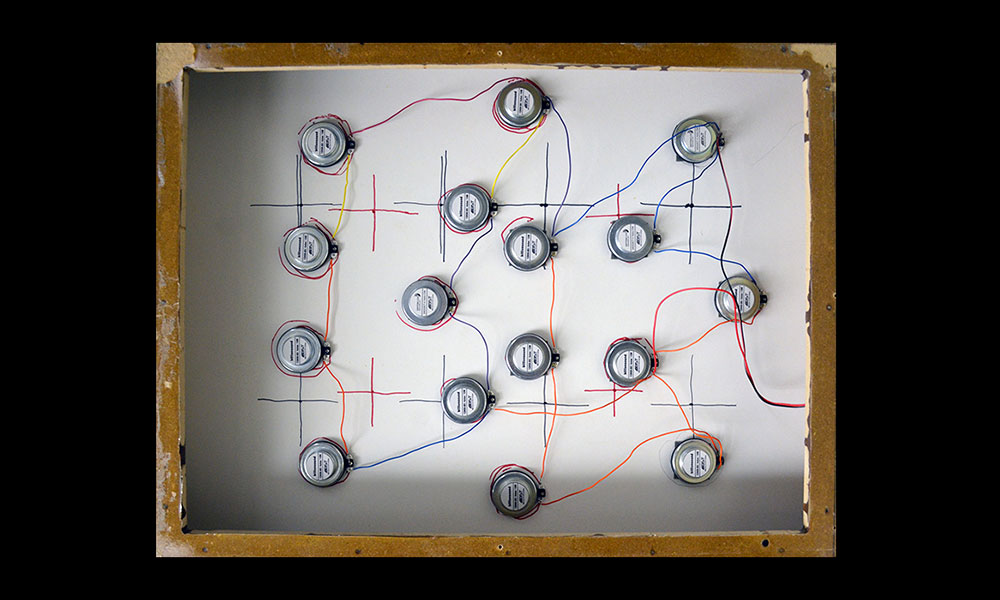
Designing a world of immersive sound
Imagine your new home theater features a screen that serves as an extended loudspeaker, able to radiate sound linked to moving video images. Then picture your walls and ceiling lined with flat-panel loudspeakers that double as wall-art, light panels, or ceiling tiles. And now imagine you could create this totally immersive sonic space for a modest price.
“This is the new audio experience that we want to give people,” says Mark Bocko, professor and chair of electrical and computer engineering at the University of Rochester. Working with current and former PhD students, this research could result not only in sonically immersive home theaters, but also make airport and subway public address systems easier to understand, and give signs a “voice” of their own.
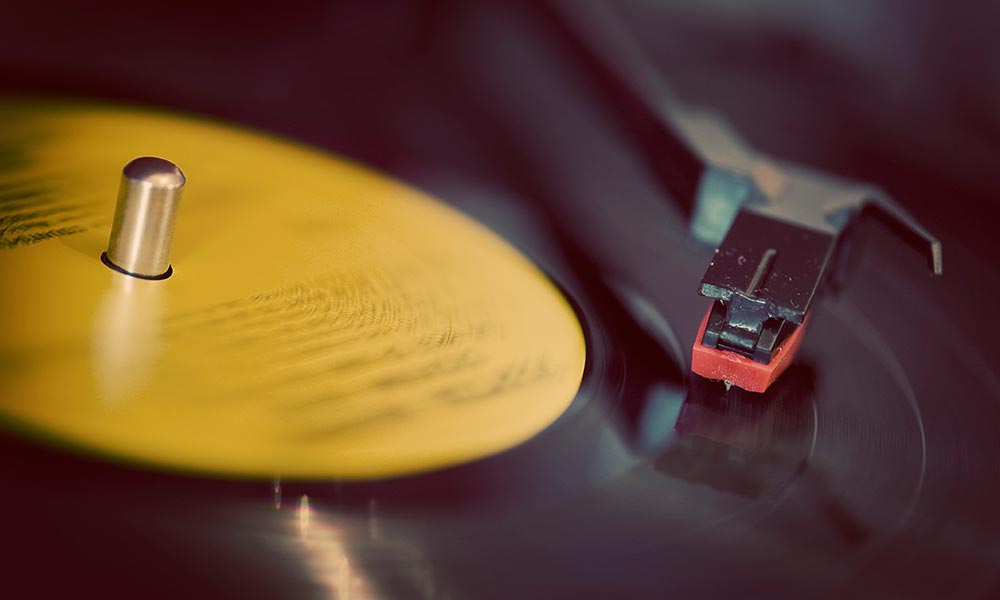
What’s vinyl got to do with it?
Among the presenters at the Light and Sound Interactive conference will be Darren Mueller, an assistant professor of musicology at the Eastman School of Music, who will be discussing the adoption of vinyl long-playing records (LPs). Mueller hopes his presentation, “Vinyl Records as New Media: A Historical Case Study,” will ignite the imaginations of those directly involved in developing new audio and visual technologies, who are steeped in the kind of transition that musicians, technologists, and recording industry leaders were in the middle of the last century.
Mueller studies the ways in which sound technologies affect the development of musical styles and culture. The bulk of his presentation, as well as his forthcoming book, will focus on the jazz industry’s adoption of the LP.Making Rochester an epicenter of light and sound innovation
Rochester has the unique potential to become an international hub for light and sound innovation, according to Joel Seligman and David Munson, presidents of the University of Rochester and Rochester Institute of Technology, respectively.
In an op-ed for the Democrat and Chronicle, Seligman and Munson make the case for building on Rochester’s history of innovation and leveraging its current influence in the fields of imaging, optics, and design. Currently, the region has “more optics manufacturers than any other area in the U.S.” Meanwhile, a strategic partnership and collaboration between the University and RIT will “serve as the backbone of virtual and augmented reality (VR/AR) development.”
The future of the past
Trained as a scholar of medieval literature, Gregory Heyworth has become a “textual scientist.” He recovers the words and images of cultural heritage objects that have been lost, through damage and erasure, to time. To rescue them, he and collaborators on the aptly named Lazarus Project use a transportable multispectral imaging lab—the only one in the world—to make the undecipherable, and even the invisible, legible again.
A new way to teach history in the 21st century
A “virtual” re-creation of early settlements on Smith’s Island, Bermuda, offers professor Michael Jarvis and his students immersive experience of the site they are working to excavate.
Retraining the brain to see after stroke
Patients who went partially blind after suffering a stroke regained large swaths of rudimentary sight after undergoing visual training designed by researchers at the University of Rochester Medical Center’s Flaum Eye Institute.
“We are the only people in the U.S. currently using this type of training to recover vision lost after damage to the primary visual cortex,” said study senior author Krystel Huxlin, director of research and the James V. Aquavella Professor of Ophthalmology. “If you talk to the majority of clinicians, they still believe nothing can be done.”
Play nation
Video games aren’t just entertainment. They’re driving computer technology, challenging conventions of storytelling, and finding their way into the classroom.
Jayne Lammers, a former high school English teacher and an assistant professor of teaching and curriculum at the Warner School, and Kristana Textor, a second-year doctoral student advised by Lammers, study the use of video games as teaching tools. Initially a skeptic, Lammers discovered that the life-simulation game the Sims—in which players create characters, assign them traits, and create stories around them—could engage students in writing and learning about narrative. Textor, long a video game enthusiast, sees video games as cultural products useful in teaching students to examine media and storytelling critically.
University start-ups highlighted in national innovation report
Clerio Vision was founded in 2014 by Wayne Knox and Jon Ellis with the Institute of Optics, and Krystel Huxlin with the Flaum Eye Institute in the Medical Center. The company is developing a new technology that improves eyesight by “writing” a prescription on the cornea using small pulses from a laser that change the focusing power of the eye, and was singled out in a new report identifying 102 companies that trace their roots to federally-funded university research.

